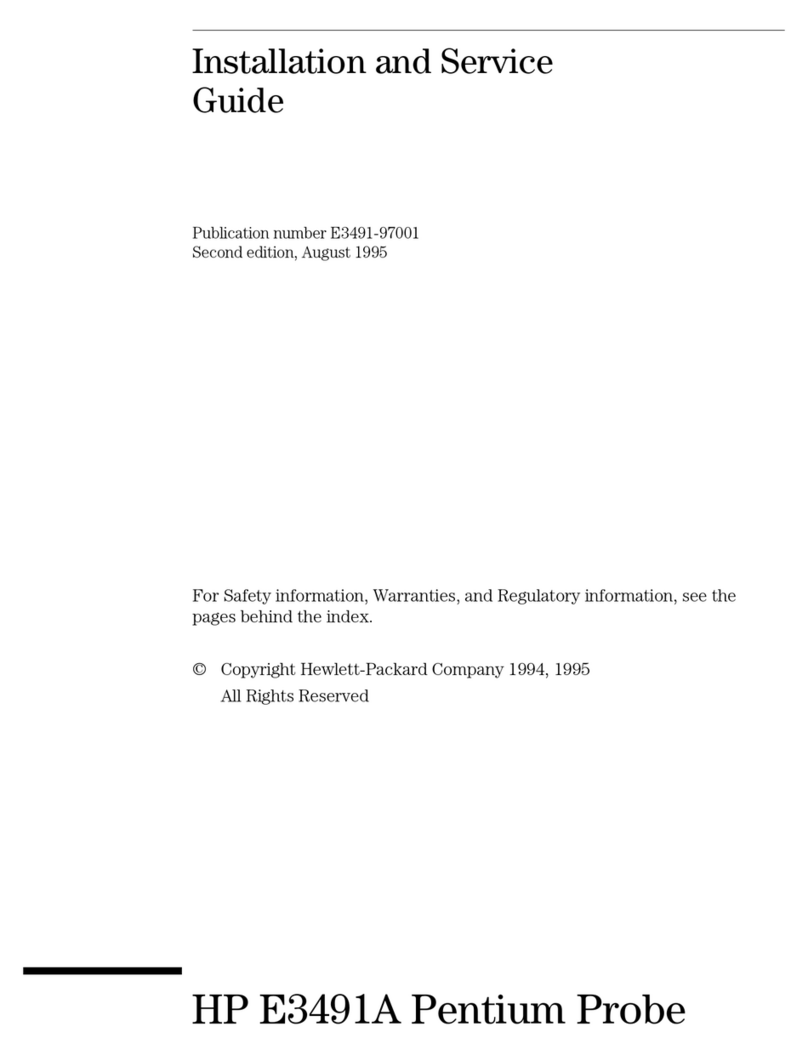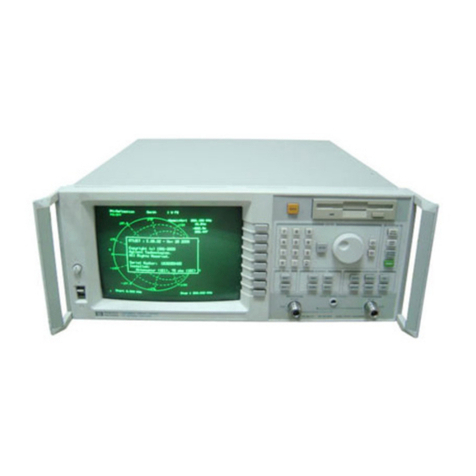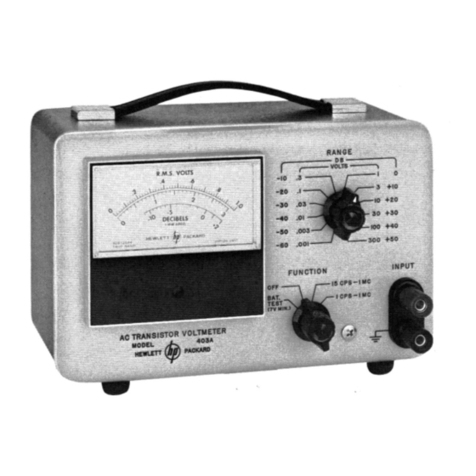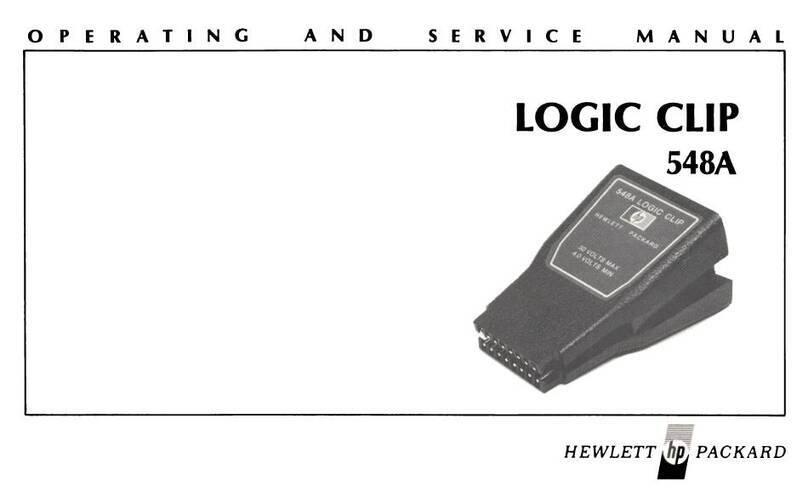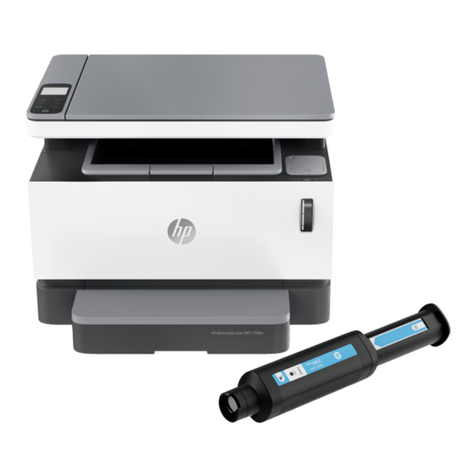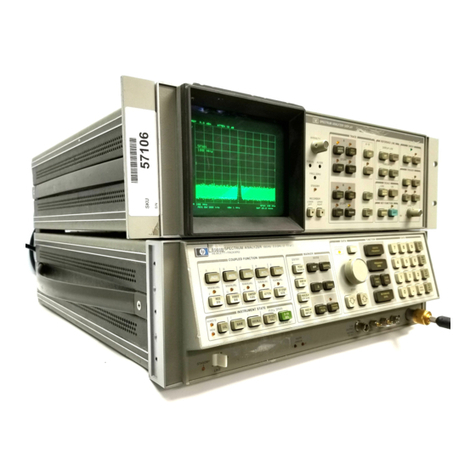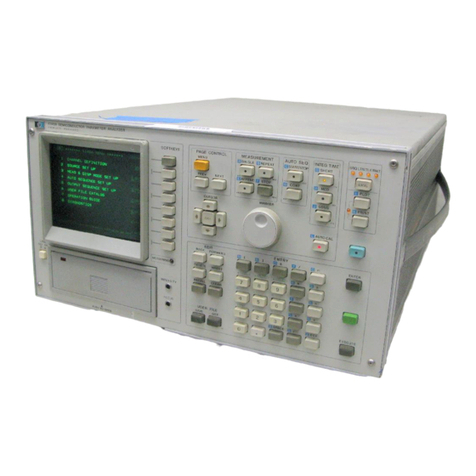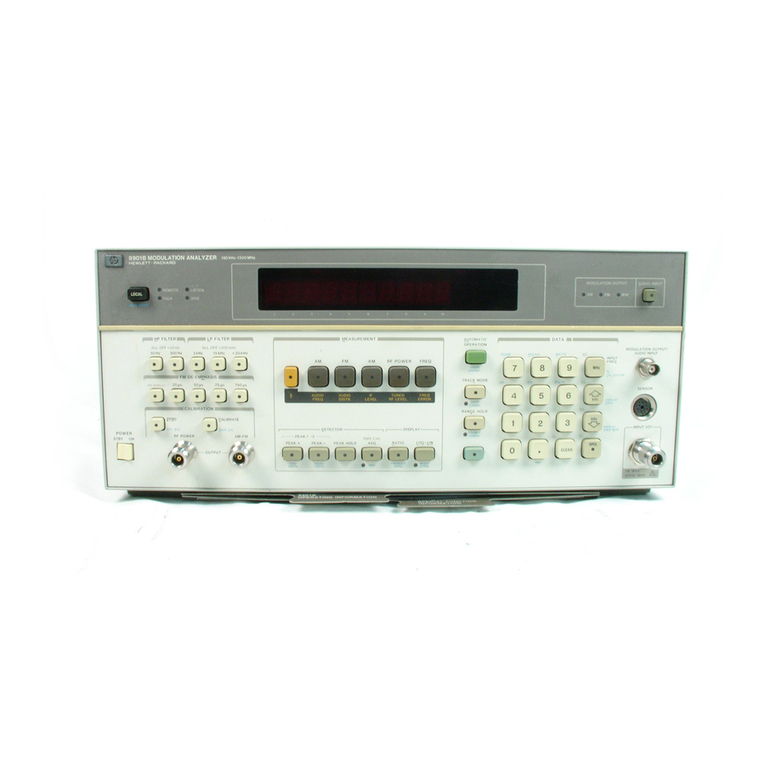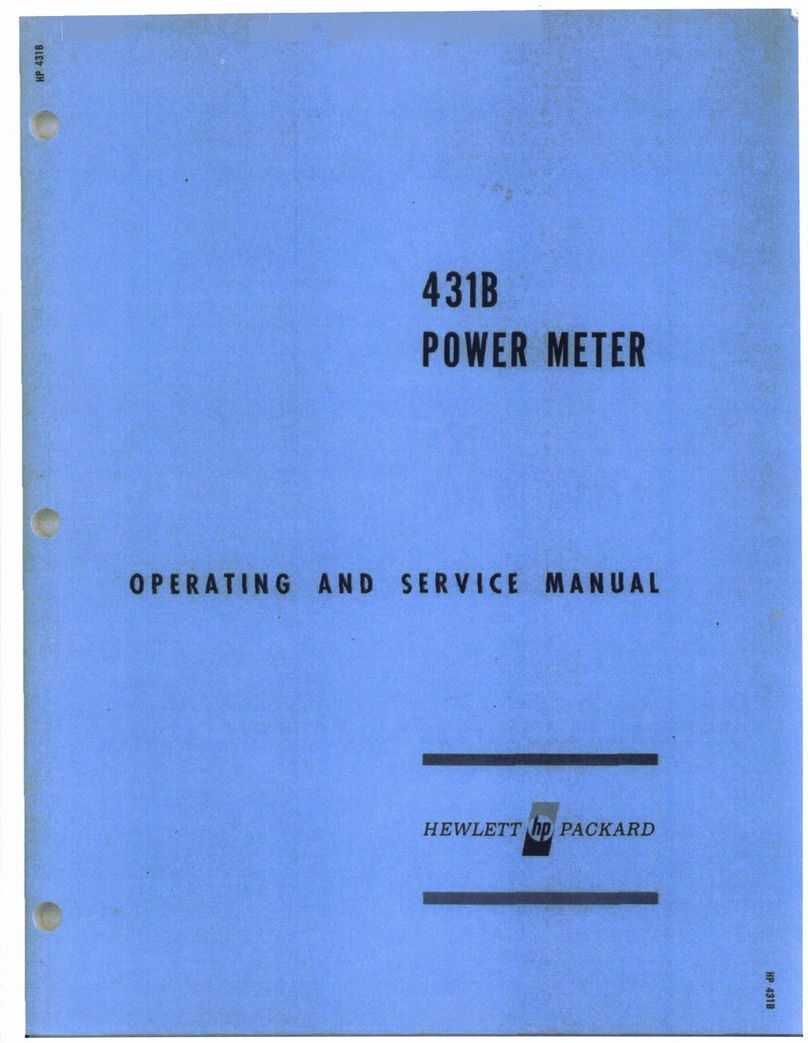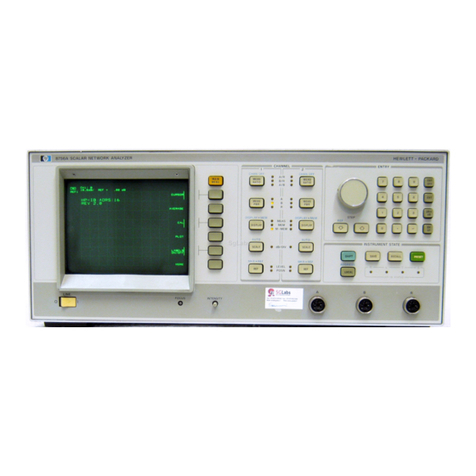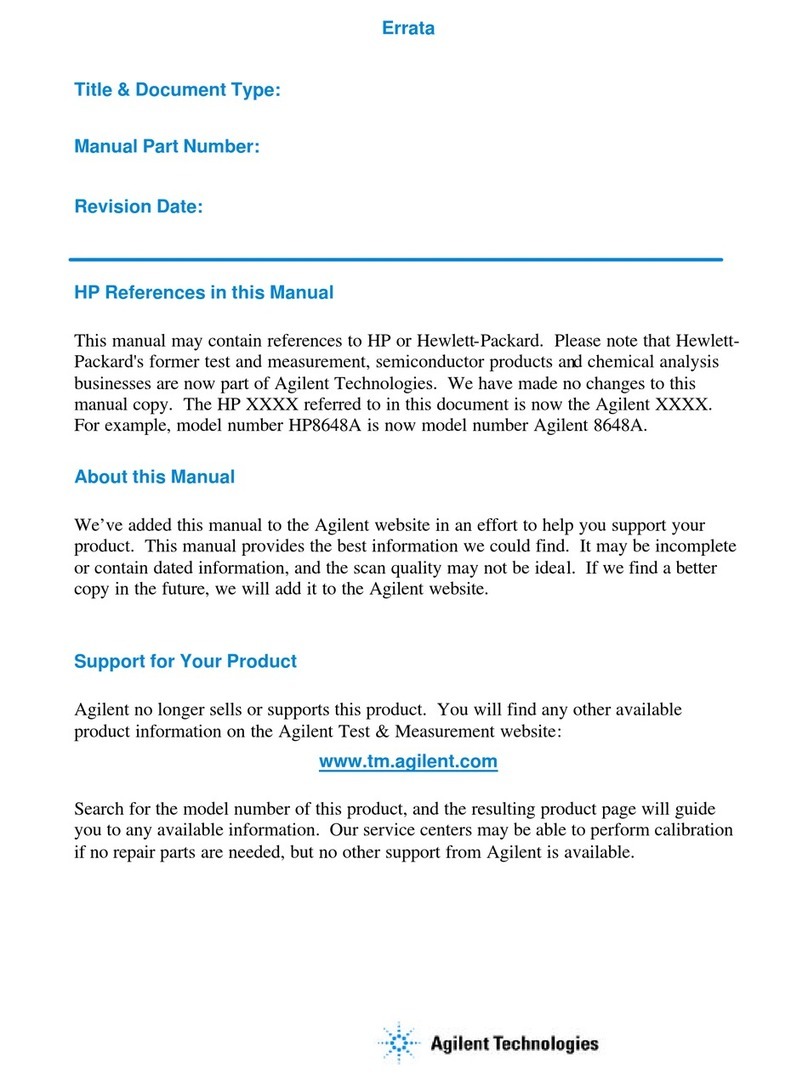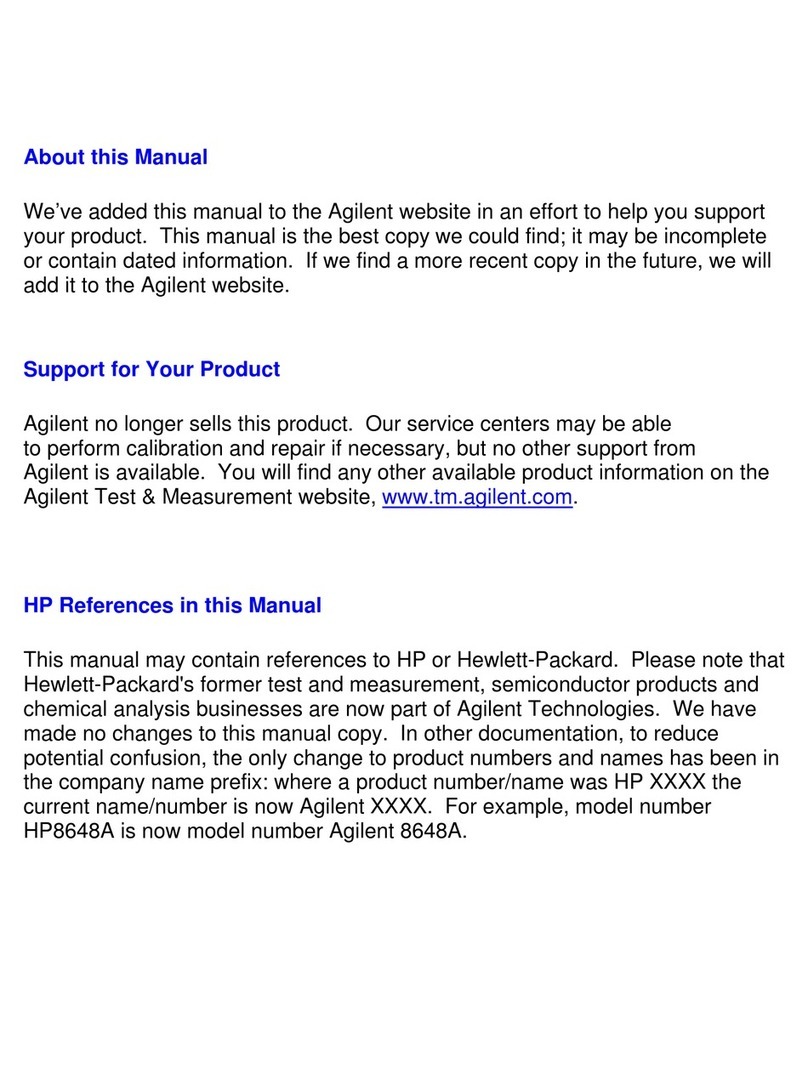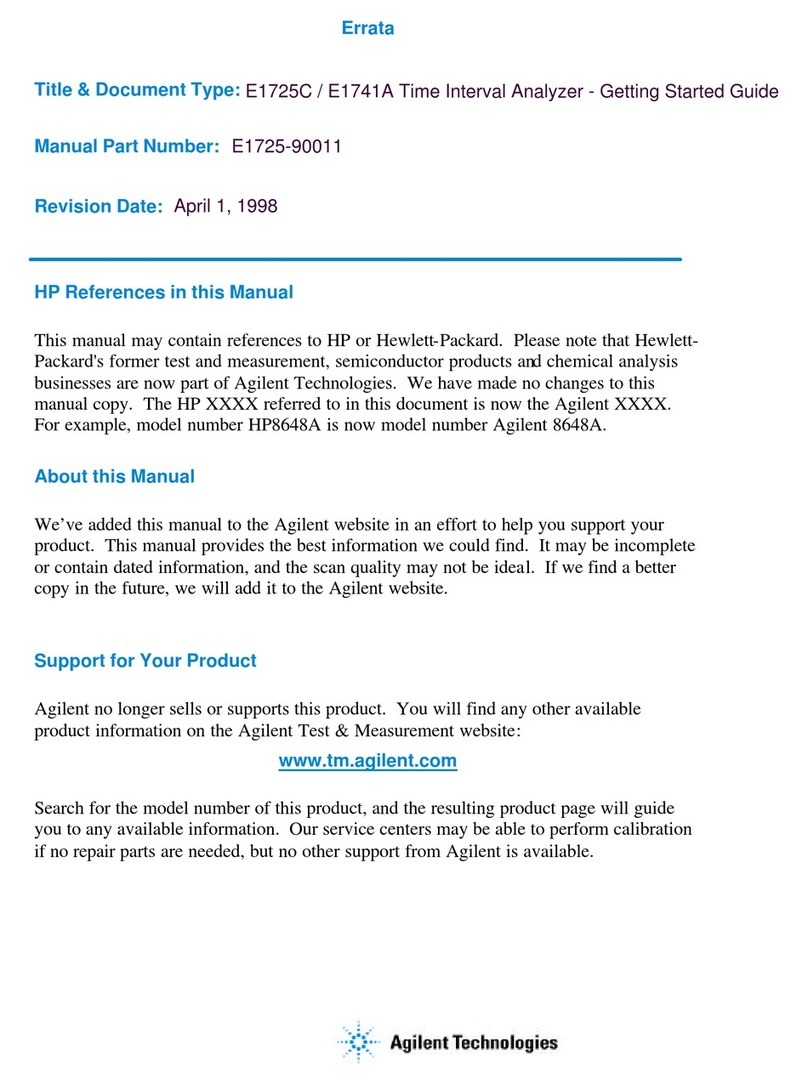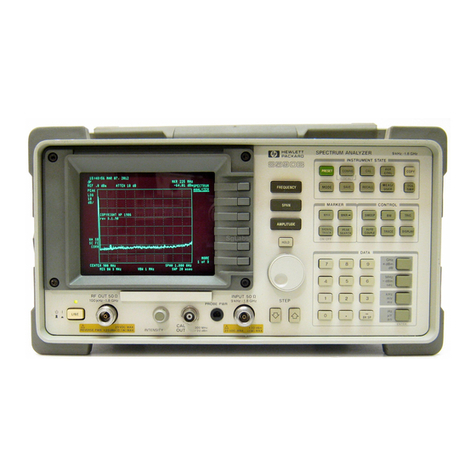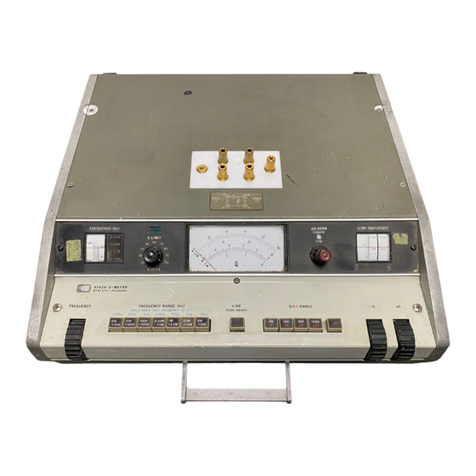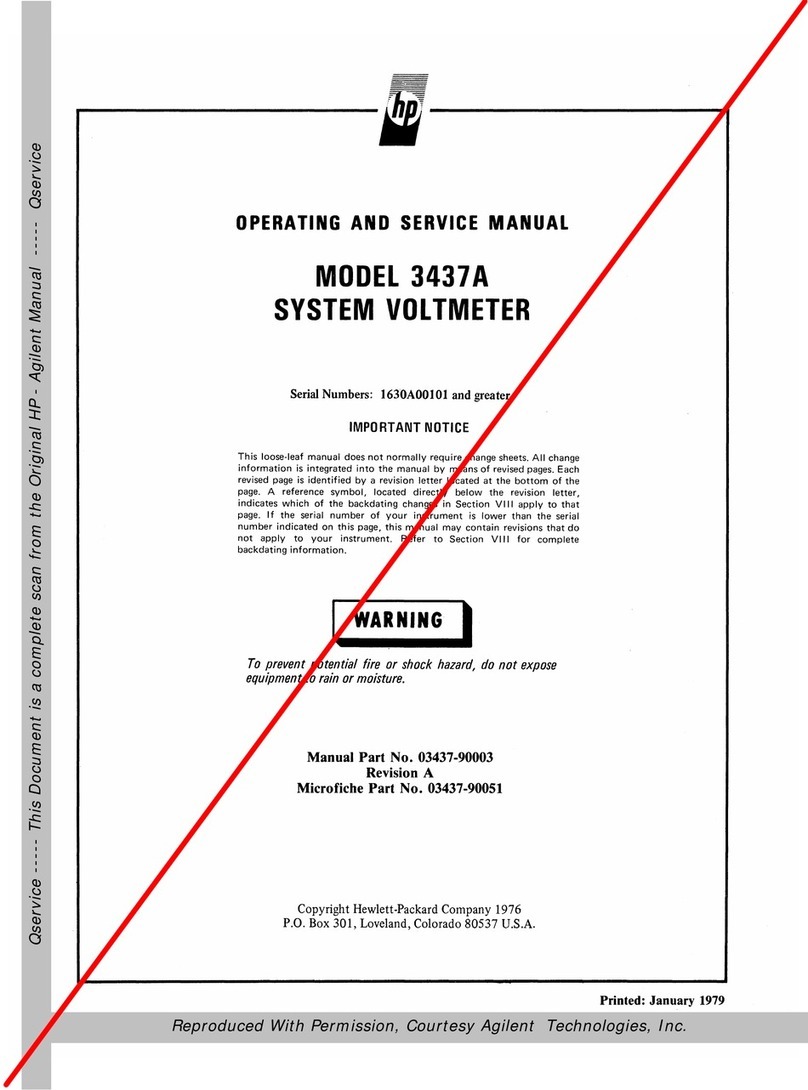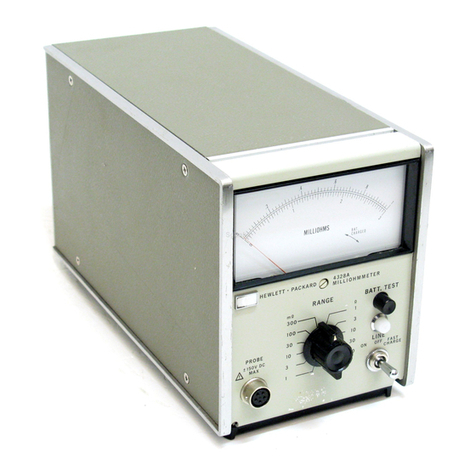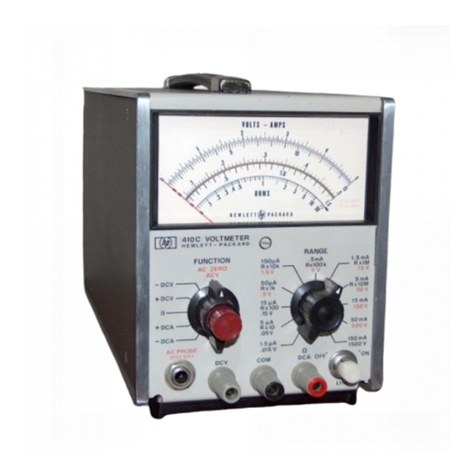Model
436A
Contents
CONTENTS
Section Page Section Page
I
GENERALINFORMATION
...............
1.1
3.52
.
Sending theRequired ServiceMessage
....
3.23
1.1
.
Introduction
................................
1.1
3.54
.
SendingtheStatusByte Message
.........
3.23
1.6
.
Specifications
...............................
1.1
3.56
.
SendingtheStatusBit Message
..........
3.23
1.8
.
Instruments Coveredby Manual
.............
1.1
3.58
.
ReceivingtheAbort Message
.............
3.23
1.14
.
Description
................................
-1-1
3.60
.
Test of HP-IBOperation
..................
3.23
.....................................
1.18
.
Options 1.3 3.62
.
Power MeasurementAccuracy
..............
3.23
1.19
.
Input-OutputOptions
....................
1-3 3.64
.
Sourcesof Error andMeasurement
..............................
1.22
.
Remote Control Options
...................
1.3 Uncertainty 3-30
.......................
1.25
.
Accessories Supplied -1-4 3.70
.
Correctionsfor Error
.....................
3-30
1.27
.
Equipment Requiredbut not Supplied
........
1.4 3.75
.
CalculatingTotal Uncertainty
............
3.30
1.29
.
Equipment Available
........................
1-4
1.33
.
RecommendedTest Equipment
..............
14
IV PERFORMANCE TESTS
..................
-4-1
.......................
1.35
.
Safety Considerations 1.4 4.1
.
Introduction
...............................
-4-1
........................
.
4.3 Equipment Required 4.1
I1
INSTALLATION
...........................
2.1
.................................
.
4.5 Test Record 4.1
2.1
.
Introduction
................................
2.1
.........................
.
4.7 PerformanceTests -4-1
2.3
.
Initial Inspection
...........................
2.1
.........................
.
4.10 Zero Carryover Test 4.2
.........................
2.5
.
Preparation for Use 2.1 4.11
.
Instrument AccuracyTest 4.3
...................
2.6
.
Power Requirements
......................
2.1 4.12
.
Calibration Factor Test
.....................
4.6
8 heV01-e andFuse Selection
...........
2-1 4.13
.
PowerReferenceLevel Test
..................
4.7
..............................
2.10
.
PowerCable -2-2
...........................
2.12
.
Address Selection 2.2
...........................
2.13
.
Circuit Options 2.2
..........................
2.15
.
Interconnections 2.2
........................
2.18
.
Mating Connectors 2.3
...................
2.21
.
Operating Environment 2.3
..........................
2.23
.
Bench Operation 2.3
.........
.................
2.25
.
Rack Mounting
;
2.3
.......................
2.28
.
Storageand Shipment 2.3
.............................
2.29
.
Environment 2.3
................................
2.31
.
Packaging 2.3
...............................
I11
OPERATION 3.1
................................
3.1
.
Introduction
3-1
..............................
3.4
.
Panel Features 3.1
....................
3.6
.
Operator's Maintenance -3-1
............................
3-8
.
Operator's Checks 3.1
................
3.10
.
Local Operating Instructions 3.1
3.12
.
Hewlett-Packard Interface Bus Remote
V
ADJUSTMENTS
...........................
51
5.1
.
Introduction
................................
51
.......................
.
5.4 Safety Considerations 5.1
........................
.
510 Equipment Required
51
5.12
.
Factory SelectedComponents
...............
5.1
514
.
Adjustment Locations
.......................
5.1
5.16
.
DC OffsetAdjustment
.......................
53
517
.
Auto Zero OffsetAdjustment
................
53
5.18
.
SpikeBalanceAdjustment
..................
54
5.19
.
Multivibrator Adjustment
...................
5-6
520
.
A-D Converter andLinear Meter
................................
Adjustment 57
521
.
PowerReferenceOscillatorFrequency
Adjustment
................................
5.8
522
.
Power ReferenceOscillatorLevel
Adjustment
...............................
5.10
5.23
.
Power SupplyAdjustments
.................
5.13
.................................
Operation 3-14
Compatibility 3.14 VI
............................
...........................
DataMessages 3-14
ReceivingData Messages 3.14
6-3
.
................
SendingDataMessagesfromthePower 6.5
.
Meter 3.18 6-7
.
...................................
Receiving theTrigger Message 3.23 6-10
.
...........
Receiving the Clear Message 3.23 6-12
.
.............
...........
Receivingthe RemoteMessage 3.23
.............
Receivingthe LocalMessage 3-23 VII
ReceivingtheLocal Lockout and 7.1
.
.......
Clear Lockout SetLocalMessages 3.23 7.3
.
......
.
ReceivingthePass ControlMessage 3.23 7.6
REPLACEABLEPARTS
....................
6.1
Introduction
................................
6.1
...............................
Abbreviations
6-1
ReplaceablePartsList
......................
6.1
OrderingInformation
.......................
6.1
PartsProvisioning
..........................
6.1
Direct Mail Order System
...................
6.1
MANUAL
CHANGES
......................
7.1
Introduction
................................
7.1
Manual Changes
............................
7.1
................
Manual Change Instructions 73
